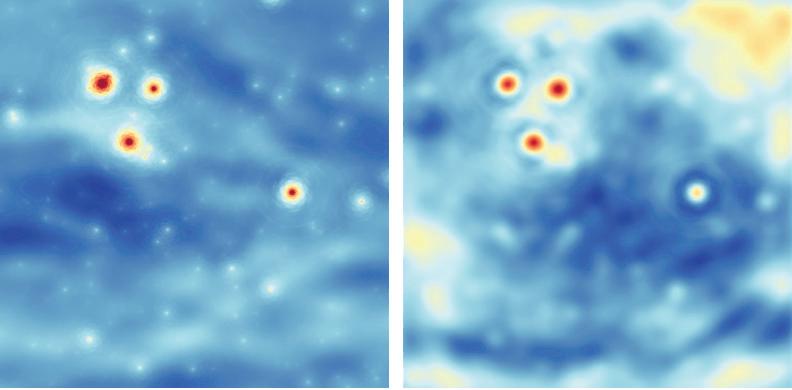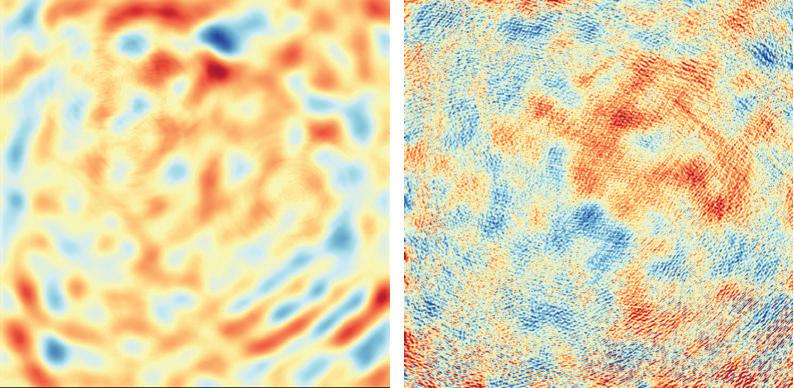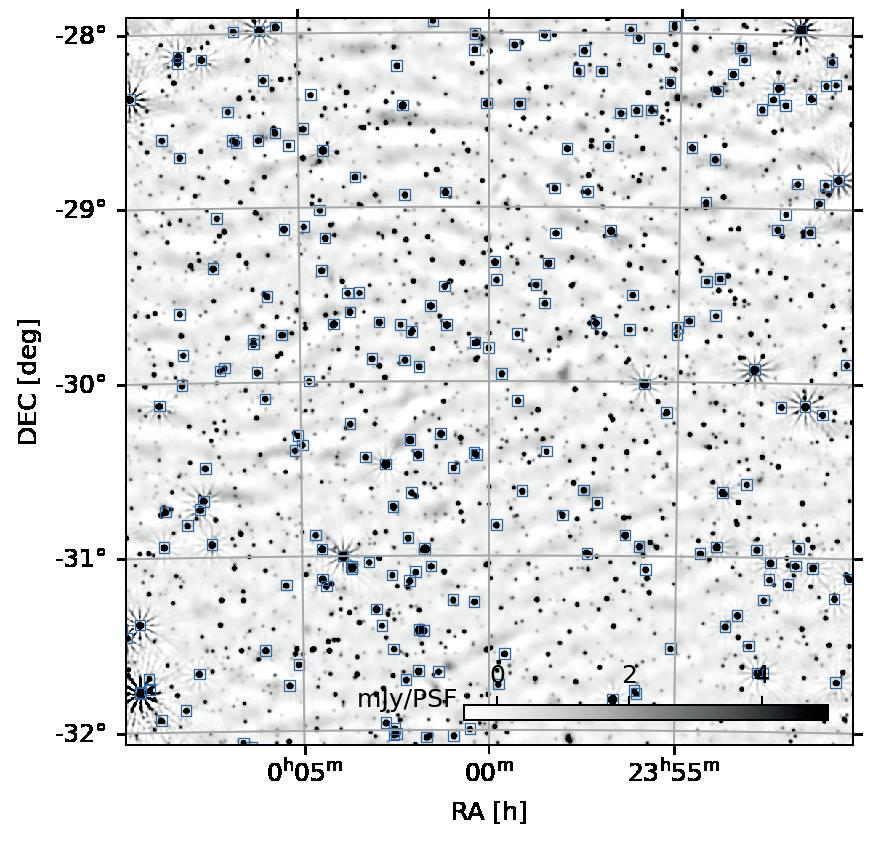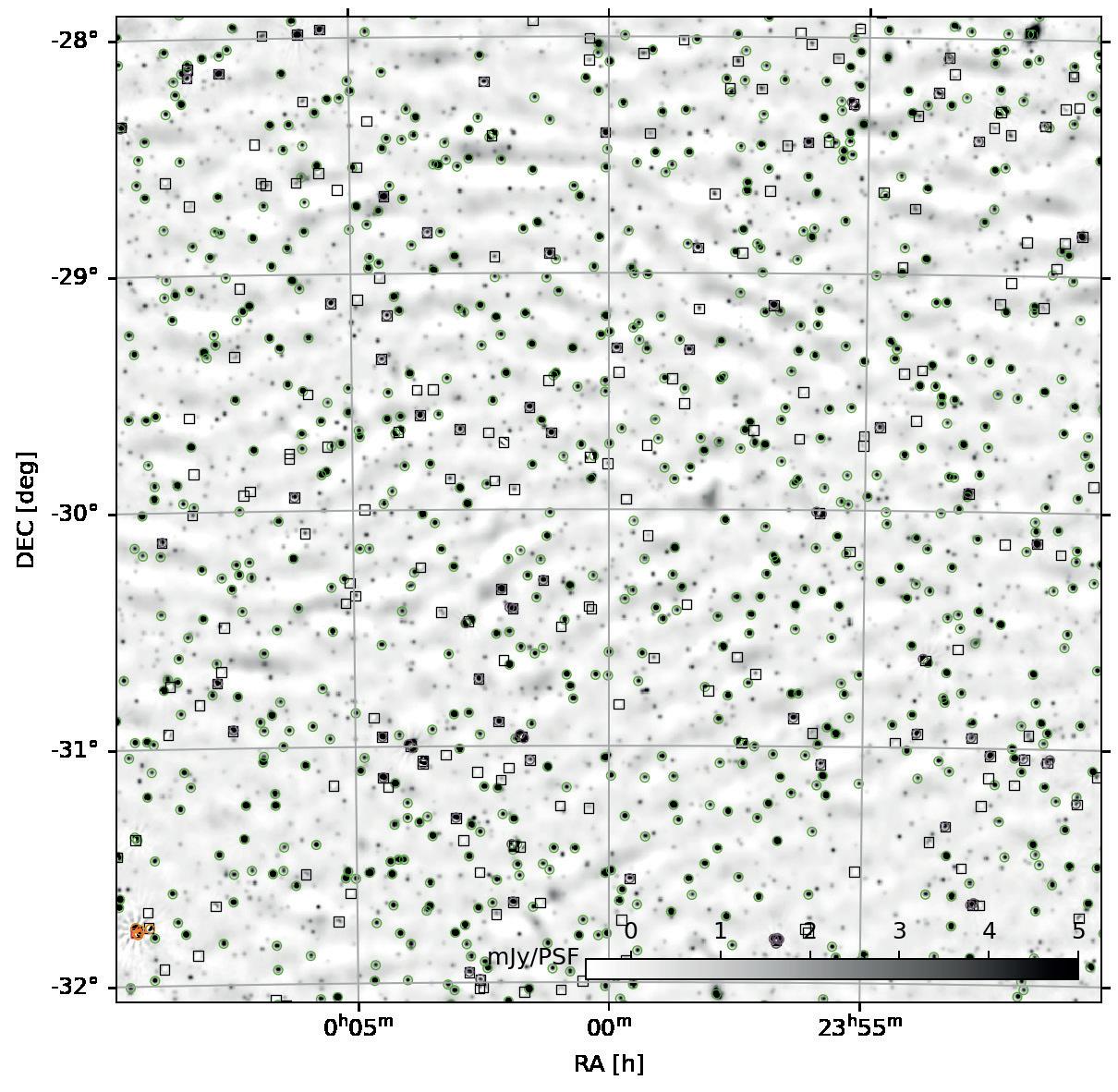
8 minute read
Innovation on display in third SKAO Science Data Challenge
from Contact 15
BY CASSANDRA CAVALLARO (SKAO)
“Our efforts to prepare the science community for dealing with the immense challenge of SKA data are paying off.”
That was the verdict of SKAO Senior Scientist Dr Anna Bonaldi following the conclusion of the Observatory’s third Science Data Challenge, which ran from March to November 2023.
Work is now underway to document and study the teams’ different approaches, in order to identify the most effective methods to analyse the huge swathes of data that will flow from SKA telescopes.
The volume of data that will be generated demands a step change in how astronomers conduct their research; the challenges are designed to support them as they prepare for this shift.
With 234 registered participants spread across 33 teams and 16 countries, this third challenge brought together astronomers, data scientists, software engineers and other specialisms, demonstrating the enthusiasm and diversity intrinsic to the SKA science community.
Twelve supercomputing centres around the world provided resources for participants to deploy their data processing pipelines, including SKA Regional Centre prototypes.
Taking the top spots on the scoreboard were the HIMALAYA team based in China, closely followed by the DOTSS-21cm team which has members in five countries.
The challenge
Teams were tasked with analysing a 7.5 TB data set made up of layer upon layer of simulated astronomical data, going back billions of years through cosmic time, in order to extract one of the faintest signals in astronomy: the light from the Epoch of Reionisation (EoR). This was when the Universe transitioned from the so-called dark ages, to when the first stars and galaxies formed.
“The signal has never been detected in reality, but the SKA telescopes’ size and sensitivity, coupled with modern computing, will give the best hope yet of achieving this key science goal,” said Dr Bonaldi, co-lead of the challenge.
If observed from Earth, the signal is obscured by everything in between us and it: the light from other galaxies and emission from within our own galaxy in the foreground. The teams had to work out how to most effectively remove this foreground emission in order to identify the EoR signal.
“To recover the simulated EoR signal from all this other ‘noise’ is very challenging. The foreground contamination is about 100,000 times brighter than the EoR signal, and we also included realistic instrumental effects, where the telescope itself introduces errors on the image, particularly affecting small details which it can’t see very well.
“We weren’t sure the teams would succeed within the constrained timeframe, but we are delighted that several of them produced a very good result. HIMALAYA did this using a very ingenious, almost counterintuitive approach.”


Discarding data
The top-scoring team was led by Dr Le Zhang, based at Sun Yat-Sen University in Guangzhou, who was supported by colleagues at Shanghai Astronomical Observatory.
“You can try to recover the EoR signal with all the small details, but this can compromise the image if it’s not done perfectly,” explained Dr Zhang.
“Instead, we actually lowered the resolution of the image even further. This process, called reconvolution, throws away part of the information, but reduces errors in the information that you keep. In this case it meant each pixel on the sky was much cleaner and easier to model to address the removal of the foreground contamination.”
The second-placed DOTSS-21cm team used a recently developed technique they pioneered on EoR and Cosmic Dawn studies using SKA pathfinders LOFAR and NenuFAR. This involved first pinpointing and removing bright, distant galaxies, then removing the bright but more diffuse emissions from the Milky Way.
“Lastly, we faced a 'confusion noise' stage, where fainter foreground sources blur together. To separate the even fainter 21-cm signal from these, we used a machine learning technique called ML-GPR, supported by a dedicated and powerful computer cluster,” said team leader Dr Florent Mertens, based at Paris Observatory’s LERMA institute.
“This method utilises machine learning algorithms to understand the statistical characteristics of the 21-cm signal from an extensive set of simulations. It allows for a more robust and accurate separation of the signal, distinguishing it from the overwhelming dominant foreground emission.”
For SKAO Science Director Dr Robert Braun, the teams’ results provide a solid foundation for analysing real SKA observations.
“I’m thrilled to see these results; I had some concerns when we issued this challenge that it might prove impossible to recover these faint simulated signals,” Dr Braun said. “I am now very hopeful that the collaborative refinement of signal recovery techniques within our global community will allow the actual EoR signal to be detected with confidence.”
This collaborative effort will encourage shared learning, the exchange of interesting ideas, and the advancement of data analysis and algorithms for SKA EoR measurements.
Pooling expertise
Although teams were scored to determine the effectiveness of the techniques, the challenges are not designed to be competitive. Instead, their value is in testing out different approaches and learning from each other in order to find the best method or combination of methods.
“This was my first encounter with simulated SKA data. I found the data format user-friendly, which makes it easy to work with, and now I intend to thoroughly study the programs and algorithms employed by other teams,” Dr Zhang said. “This collaborative effort will encourage shared learning, the exchange of interesting ideas, and the advancement of data analysis and algorithms for SKA EoR measurements.”
The DOTSS-21cm team, which included specialists in radio astronomy, signal processing, computer science, and 21-cm signal and foreground simulations, found similar value in taking part.
“The challenge was incredibly exciting and insightful for us, and by bringing together experts from different countries, we've been able to pool a wide range of skills and knowledge. Tackling the specific challenges of this dataset gave us the opportunity to refine our methods and think about new approaches to data analysis,” said Dr Mertens.
The challenge has also had broader impacts; the UKbased Nottingham-Imperial team used it to train two new PhD students at Imperial College and Nottingham University.
”It was a great way to give them a crash course on the intricacies of radio data and the various methods used to transform the data from the raw, messy observations to the lovely clean images we want,” said team leader Dr Emma Chapman. “It added some spark to what otherwise may have been a standard reading/coding exercise, and we all learned a lot, including us as supervisors!”
In Australia, the Wizards of Oz 3D team used the challenge to analyse techniques designed for the Murchison Widefield Array, an SKA precursor telescope which is studying the distant Universe.
“We gained value from needing to adjust components of our MWA pipeline for the SKA dataset,” says team spokesperson Dr Cathryn Trott. “This exposed parts that hadn't been looked at for a while, and so we were able to re-visit those in our codebase and take a fresh view of how they were functioning.”
Open science
Importantly, the data challenges put into action the SKAO’s commitment to open science, through encouraging teams to publish their code so that others can reproduce their results.


“We wanted to recognise teams’ efforts in this area through ‘reproducibility badges’ for those who published their data pipelines. Nine teams have earned these badges, which is a clear show of support for the goals of open science: making science more accessible and by extension more widely beneficial,” said SKAO Scientist Dr Philippa Hartley, co-lead of the challenge.
“These algorithms are extremely powerful when dealing with mammoth data sets, so they could well be adapted for other purposes in the future - that’s why open science is so important.”
The next challenge, which opened for registrations in March, will ask teams to establish important parameters of the Epoch of Reionisation. They’ll be using simulations to determine the fraction of hydrogen gas that became ionised over time, which can help to infer how many stars there were, and when they started forming.
“We’re hoping that teams will use this next stage of the challenge to expand on what we’ve learned from this one, but what we’ve already seen is that, in terms of the community maximising the potential of SKA data, we’re in very good hands,” says Dr Bonaldi.
“So far, they have risen to meet the challenge with great ingenuity, and I am excited to see what they come up with next.”










